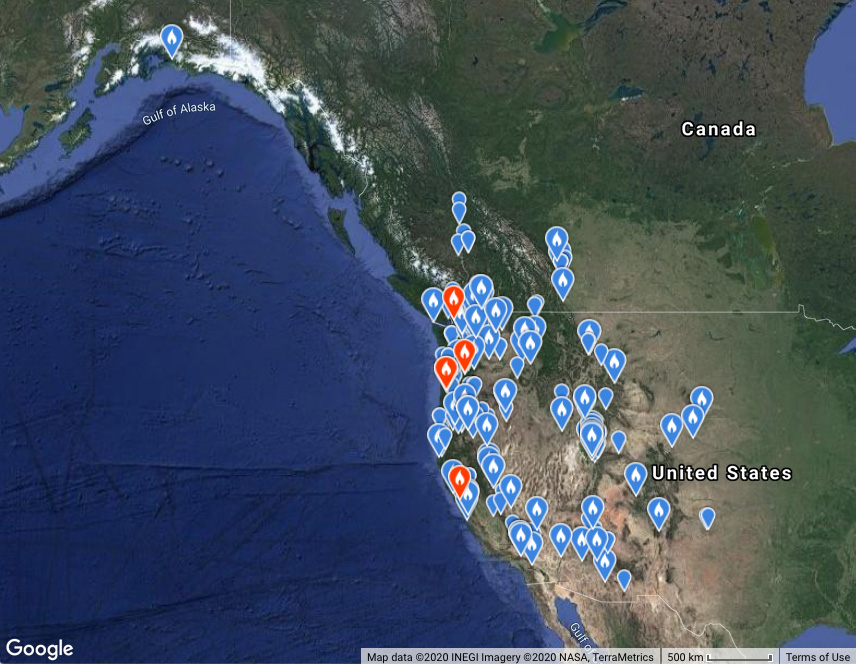Every year around the fall equinox, a highly anticipated and widely read birding and ornithological article, the Winter Finch Forecast, is published. Many people associate the legendary Ron Pittaway with this forecast, but with his retirement Tyler Hoar now compiles the forecast. This forecast tracks Evening Grosbeak, Pine Grosbeak, Pine Siskin, Purple Finch, Red Crossbill, White-winged Crossbill, Common Redpoll, and Hoary Redpoll sightings.
During Fall 2020 a “superflight of finches” occurred in the eastern US, featuring the biggest Evening Grosbeak migration in more than 20 years, redpolls undergoing their largest movement in perhaps a decade, and Pine Siskins irrupting in their best numbers since 2008. These ‘Finch Superflights’, which are defined as southern flights of all eight eastern irruptive finches, are rare, and this year, conditions have aligned and all species have moved in numbers, including the rarest of irruptives, the Pine Grosbeak. Pine Siskin, Evening Grosbeak, Purple Finch, and honorary finch Red-breasted Nuthatch, can all be found in Florida already. Evening Grosbeak, Purple Finch, and to a lesser extent, Pine Siskin, are all spruce budworm specialists (Bolgiano 2004), which is a conifer pest found across conifer forests to the north and west. Typically birders think of spruce budworm in terms of “spruce budworm warblers” such as Cape May and Tennessee Warblers, but when there’s a plentiful, easily accessible, protein rich food source, finches also will opportunistically use them to feed their young. This, in conjunction with good recent conifer seed crops, has led to high population numbers in most of the eastern finches. Now that these cyclical food crops are low, finches are flooding out of the boreal and into the eastern States. Note that detailed causal mechanisms of these irruptive and eruptive behaviors are the subjects of much ongoing research, especially regarding effects of food resources and predictability of environmental conditions on birds’ behaviors, e.g. birds’ cognitive abilities to remember where they cache food.
Even species that are more seen as obligate conifer seed specialists like crossbills, which have also moved southward during this “finch superflight”, will feed on and feed their young spruce budworm (Jeff Groth pers comm.). The current spruce budworm outbreak has been ongoing across large portions of Quebec and Ontario the last several years. If there is one silver lining of 2020’s pandemic, perhaps it is that many areas of Quebec were not treated with pesticides for budworm. Forests are sprayed to mitigate the damage causes during these outbreaks, since this pest can kill the trees if not treated. Additionally, large sections of the boreal forests have produced two excellent spruce cone crops during the last four years, and this, in conjunction with the on-going budworm outbreak, has led to the massive finch irruption event.
Below are observations from eBird during October-December 2019 and 2020 for irruptive finch species. Note how extensive observations during 2020 are compared to 2019.
Two irruptive finches in North America are known to have distinctive and discrete “call types”, the Red Crossbill, having 10 call types, and the Evening Grosbeak, with 5 call types. Call types are defined by the flight call an Evening Grosbeak or Red Crossbill gives when flying; however, it is important to note that “flight calls” can also be given by perched birds too. The call type phenomena are not as widely known for Evening Grosbeak as for Red Crossbill, but particularly noteworthy are that Type 3 Evening Grosbeak is the irruptive type in the east and that Type 1 is the irruptive type in the west. Type 1 have also moved some this fall, but more recordings are needed to better determine the breeding areas and irruptive areas for Type 1.
Evening Grosbeak type 1, the irruptive call type in the west.
Evening Grosbeak type 3, the irruptive call type in the east.
While Type 1 populations exhibited some movements last year, the extent of these wanderings so early in this 2020 season strongly suggests there could be more movements in the west that have gone undetected. Please record Evening Grosbeaks in the west and upload them to eBird, and also let us know here at the Finch Research Network that you have done so and we’ll get the identification back to you.
Matthew A. Young: may6@cornell.edu or info@finchnetwork.org
Tim Spahr: tspahr44@gmail.com or info@finchnetwork.org





